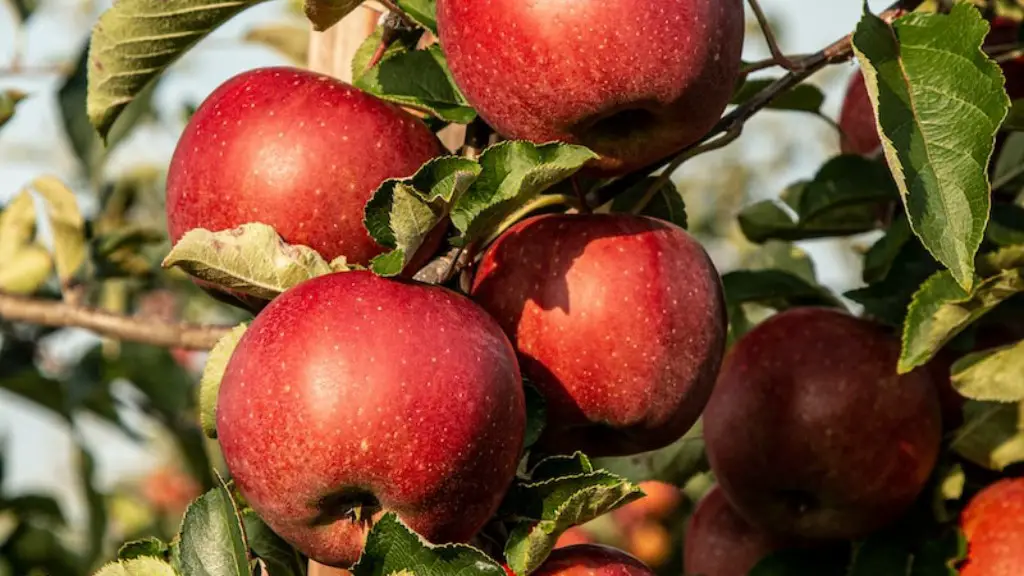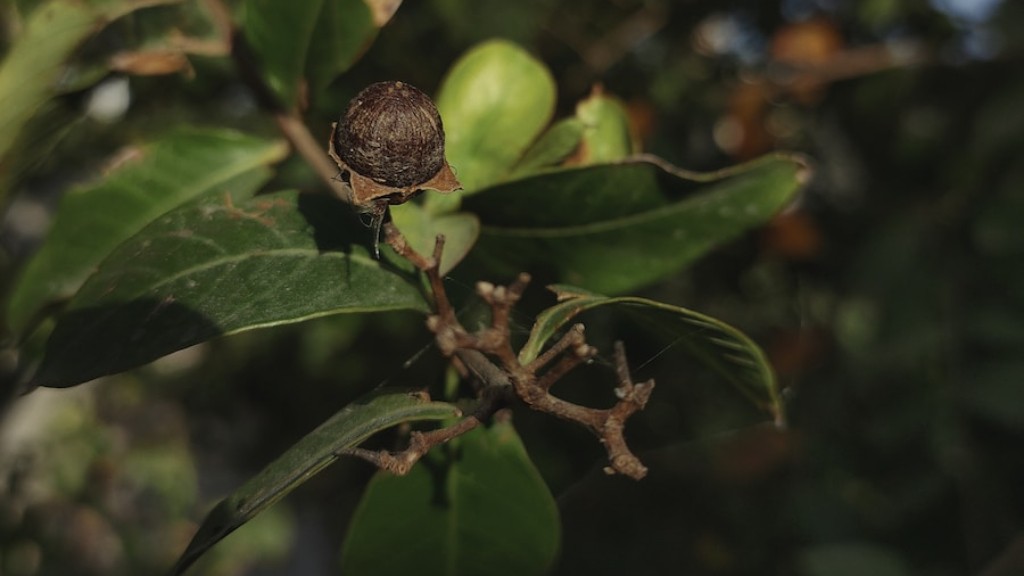As an apple tree specialist, I have been asked many times as to why apple trees can have black spots on their leaves. The answer is quite complex and involves a combination of both environmental and biological factors.
Firstly, pathogens are one of the main culprits in these cases, including fungi and bacteria that lead to black spots forming on leaves. Apple scab is one of the most common diseases triggered by these organisms, where the leaves develop dark-colored spots. Proper orchard maintenance is a key part of preventing scab outbreaks.
Secondly, environmental factors such as insufficient water or nutrient shortages can also lead to black spots forming on leaves. While apple trees naturally rely on a certain amount of water to thrive, excessive water can also cause a range of problems, one of which is black spot damage. It is important to maintain a proper balance of water, otherwise leaves may start to discolor and also develop marks.
In addition, other environmental factors such as temperature, light and air quality can also contribute to the spread of diseases, as well as black spots on leaves. Temperatures that are too low or too high can cause the leaves of apple trees to become stressed and eventually develop spots that change their color. Poor air quality, meanwhile, can also lead to weakened plants, thus allowing disease and black spots to form.
Finally, certain pests such as mites and aphids can also be a major factor in black spots appearing on apple tree leaves. These pests feed on leaves and as they do, they can cause small spots that eventually grow bigger and darker. Spraying the tree with an insecticidal soap or another pesticide is an effective way of getting rid of the pests and keeping leaves clean.
How to Prevent Black Spots on Apple Tree Leaves
Given the complex nature of causes of black spots on apple tree leaves, prevention is often the best approach. Keeping the tree healthy with proper pruning and fertilizer is a great start. Ensuring the tree is receiving adequate air circulation, the right amount of water, and enough nutrients can reduce the chances of stress and disease.
Regular spraying with a suitable pesticide will also help to keep pests at bay, while removing any infected or dead leaves from the tree can help to reduce the spread of diseases. Not to mention, making sure temperatures don’t drop too low or get too high.
Finally, a preventative solution such as copper-based fungicides is also an effective way of discouraging some of the most common pathogens that cause black spots on apple tree leaves. These fungicides contain copper that helps to inhibit the growth of fungi, lowering the chances of the leaves becoming infected.
How to Treat Black Spots on Apple Tree Leaves
Once black spots have begun to form on apple tree leaves, the first step is to identify the cause as well as the type of disease that is present. Depending on the situation, spraying with a suitable pesticide and/or fungicide can be effective in treating the problem. Doing this regularly and thoroughly is essential for successfully getting rid of the disease and treating the spots.
As mentioned before, removing any infected leaves is also recommended, particularly if the spread of the disease is severe. Not to mention, providing basic care such as watering, pruning and fertilizing the tree can help to reduce the overall risk of disease and improve its health.
Some homeowners may resort to harsher treatments such as pruning the entire tree. While this may be effective in serious cases, it is usually not necessary and can negatively impacting the health of the tree. Therefore, it is always advised to speak to an apple tree specialist before taking such drastic measures.
Different Types of Diseases That Cause Black Spots on Apple Tree Leaves
There are a number of fungi, bacteria, and other microorganisms that can cause black spots on apple tree leaves. Apple scab is one of the most common ones, where dark spots appear on the leaves, gradually leading to brown, discolored and disfigured leaves.
Powdery mildew is another common culprit, which results in a white coating on the underside of the leaves as well as black spots appearing on the top. Other diseases include anthracnose, rust fungi, and downy mildew. In more severe cases, viruses can also trigger the formation of black spots.
Common Symptoms of Black Spots on Apple Tree Leaves
When it comes to detecting the presence of black spots on apple tree leaves, the most common symptom is their appearance on the underside or topside of the leaves. Apart from this, the leaves may start to discolor and deform, which is usually a sign of an underlying problem. Other symptoms include reduced vigor and signs of pests or diseases on the bark of the tree.
In addition, wilting leaves and fruit, as well as premature leaf loss, can indicate that the tree is under attack from pathogens or pests. Symptoms like these should not be ignored, as they can affect the tree’s health in the long term.
Signs of a Healthy Apple Tree
It’s important to recognize a healthy apple tree in order to prevent black spots from appearing on its leaves. Some of the main signs of an apple tree in good health are lush foliage, vibrant green color, and absence of disease and pest infestations. In addition, healthy trees also show an absence of wilting and weak branches, as well as abundance of blooming flowers and good fruit production.
Lastly, a healthy apple tree should not show signs of excessive foliage growth. As a mature tree ages, it’s perfectly normal for some growth to be reduced and the leaves to become smaller. This is a sign of healthy foliage rather than a problem that needs to be addressed.



